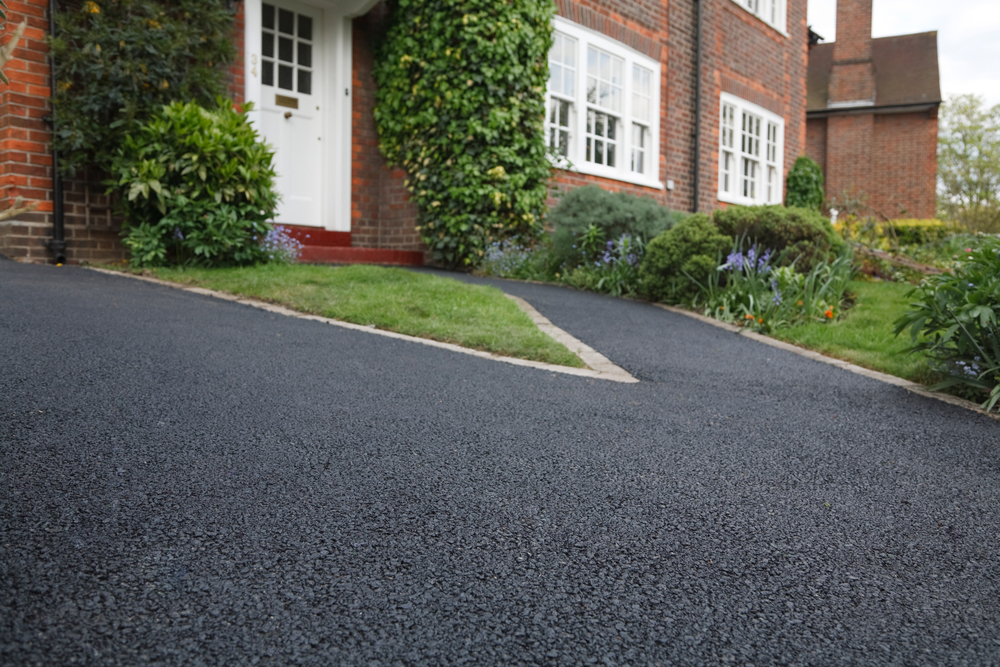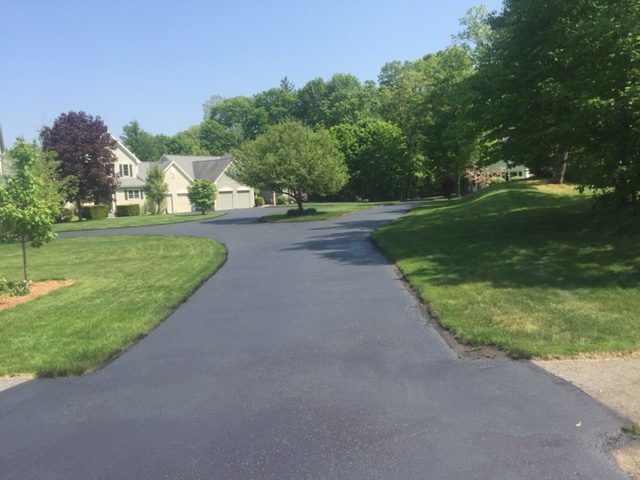Grasping Angled Parking: How Asphalt Sealing Enhances Commercial Whole Lots
Wiki Article
Hot Mix Asphalt: A Sustainable Service for Pavement
Warm Mix Asphalt (HMA) has actually arised as a leading lasting choice for pavement options, offering a myriad of environmental advantages and ingenious modern technologies. As the need for green building methods grows, discovering the subtleties of HMA's sustainability can offer beneficial understandings right into the future of sidewalk solutions.Environmental Advantages of Hot Mix Asphalt

Furthermore, Hot Mix Asphalt helps to reduce city warmth island results. Its dark shade takes in sunshine, reducing the amount of warm reflected back right into the ambience compared to lighter-colored sidewalks. This can lower ambient temperatures in urban areas, lowering the need for a/c and ultimately reducing energy intake.
Furthermore, Hot Mix Asphalt adds to boosted stormwater administration. Its permeable nature permits water to charge and infiltrate the pavement groundwater products, reducing overflow and the risk of flooding. These ecological advantages make Hot Mix Asphalt a sustainable selection for paving roadways and highways.
Power Effectiveness in HMA Manufacturing
Is energy efficiency a crucial variable in the manufacturing of Hot Mix Asphalt (HMA)? Power plays a significant function in the manufacturing of HMA, influencing both expense and environmental sustainability. One key element of power efficiency in HMA production is the use of warm mix asphalt (WMA) technologies.Furthermore, innovations in plant innovations have actually resulted in even more energy-efficient HMA production procedures. Modern plants are made with functions like recycled asphalt pavement (RAP) handling capabilities, reliable heater systems, and enhanced insulation, all contributing to power savings. By maximizing power usage in HMA production, the industry can minimize its carbon footprint while keeping high-quality pavement materials. Energy efficiency is, therefore, a crucial factor to consider in guaranteeing the sustainability of Warm Mix Asphalt production.
Recyclability of Hot Mix Asphalt
The recyclability of Hot Mix Asphalt (HMA) is an essential aspect of its sustainability and long-term ecological influence. HMA is among the most recycled materials in the USA, with over 100 million lots of reclaimed asphalt pavement (RAP) being reused yearly in new sidewalk construction. Reusing HMA provides numerous ecological benefits, such as reducing the requirement for virgin materials, reducing energy intake during manufacturing, and decreasing the amount of waste sent out to landfills.The procedure of recycling HMA involves crushing the existing pavement, crushing it right into smaller sized items, and blending it with brand-new aggregate and asphalt binder to develop a recycled mix. Overall, the recyclability of HMA plays a substantial role in promoting sustainable methods within the pavement market.

Long-Term Efficiency of HMA
Asphalt pavements show longevity and strength over an extended duration, showing the long-lasting efficiency of Warm Mix Asphalt (HMA) The long life of HMA can be credited to its capability to endure rush hour lots, rough weather problems, and the effects of aging. Research studies have actually shown that properly designed and appropriately constructed HMA sidewalks can last for two decades or more with routine maintenance. The trick to making the most of the long-term performance of HMA hinges on making use of high-quality materials, complying with finest techniques in building, and implementing effective maintenance techniques. Appropriate drainage, regular inspections, and prompt repairs are vital for maintaining the structural stability of HMA sidewalks gradually. In addition, improvements in HMA modern technology, such as the use of polymer-modified binders and cozy mix asphalt, have additionally improved the resilience and durability of HMA sidewalks. By prioritizing high quality construction and maintenance methods, HMA continues to prove itself as a sustainable and cost-efficient solution for durable sidewalk infrastructure.
HMA: Toughness and Sustainability
Showing both toughness and sustainability, Hot Mix Asphalt (HMA) has come to be a foundation in the construction of long-lasting sidewalk facilities - hot mix asphalt. HMA's longevity comes from its capacity to endure heavy lots, extreme climate condition, and high website traffic volumes, making it a trusted option for roads, highways, and airport paths. The composition of HMA, which usually includes accumulations, binder, and filler, plays an essential role in enhancing its longevity and resistance to tear and put on
Furthermore, HMA's sustainability exists in its recyclability and energy-efficient production process. The capacity to reuse redeemed asphalt pavement (RAP) in brand-new HMA blends lowers the demand for virgin products and reduces the environmental effect of pavement building and construction and upkeep. Additionally, the power effectiveness of producing HMA exists in its reduced mixing temperatures compared to various other sidewalk products, bring about minimized power intake and greenhouse gas exhausts.
Conclusion
Finally, hot mix asphalt (HMA) uses a lasting option for pavement with its eco-friendly features. HMA's recyclability, energy efficiency in production, and long-lasting resilience make it a green choice for road building and construction. By conserving all-natural resources, lowering waste, and decreasing greenhouse gas emissions, HMA plays an important role in advertising sustainability in facilities growth. Its ability to alleviate urban warm island effects further emphasizes its importance in developing ecologically conscious and resistant pavement systems.
HMA is one of the most recycled materials in the United States, with over 100 million tons of reclaimed asphalt pavement (RAP) being recycled each year in brand-new pavement building.The process of recycling HMA involves grating the existing pavement, crushing it into smaller sized items, and mixing it with brand-new accumulation and asphalt binder to create a recycled mix.Asphalt pavements show resilience and durability over an extensive duration, showing the long-term efficiency of commercial parking lot paving Hot Mix Asphalt (HMA) Additionally, developments in HMA technology, such as the use of polymer-modified binders and warm mix asphalt, have additionally boosted the toughness and longevity of HMA pavements. The capability to recycle reclaimed asphalt pavement (RAP) in new HMA mixtures minimizes the need for virgin products and lessens the environmental effect of sidewalk construction and maintenance.
Report this wiki page